AESOP -- Vita et fabulae Aesopi , in Greek and Latin. Greek recension of the Byzantine monk Planudes (early 14th century), Latin translations by Rinucius of Arezzo (c. 1395 - after 1456) and Bonus Accursius of Pisa (d. c. 1485). Edited by Bonus Accursius. [Milan:] Bonus Accursius, [c. 1478]. 3 parts in one volume, median 4° (216 x 152mm). Collation: part I: a-d 8 e-g 8 h 4 (a1r-v Rinucius's dedication to Cardinal Antonio de la Cerda of St. Chrysogonus (1448-1459), a1v-2r preface, a2r-d8v Aesopi Vita , e1r-h3v Argumentum fabularum , Rinucius's Latin translation of Aesop's Fables, h4 blank); Part II: A-D 8 E 8 2 f- 2 h 8 i 6 (A1 Accursius's Latin dedication to Johannes Franciscus Turrianus, A2r-D8v Life of Aesop in Greek, E1r-i6r Fables in Greek, i6v blank); part III: 2 a- 2 b 8 2 C- 2 D 8 2 E 6 ( 2 a1r blank, 2 a1v Accursius's Latin dedication to Turrianus, 2 a2r- 2 E6r a selection of 61 fables printed in Greek, with Latin translation by Accursius, in parallel columns, 2 E6r colophon, 2 E6v blank). 167 leaves (of 168, without blank h4). Unwatermarked paper throughout. Some pinholes preserved. Types 1:119R and 2:119Gk, the latter originally cut by Demetrius Damilas for Dionysius Paravisinus. 25 lines, double column in part 3. Initial spaces with printed guide-letters. Printed signatures in parts 1 and 3 (stamped signatures at extreme lower right in part 2 cut away). Headings ruled in red at time of binding. (First leaf cropped and window-mounted, 1/1 foremargin restored, lower blank corner of final 8 lvs. restored, pressed and washed but some staining remaining, small wormhole in quire A.) Early English 19th-century blue straight-grained morocco gilt, dotted ornament at head and foot of spine, orange glazed endpapers, blue morocco hinges, gilt edges (discreet restorations at head of spine), black morocco solander box by Sangorski and Sutcliffe. Provenance : early inscription on 1/1 and marginal annotations washed -- John Wyndham Bruce (inscription dated 1 April 1846, purchased from Pickering, armorial bookplate) -- Haven O'More (booklabel, sale Sotheby's New York, 9 November 1989, lot 24). EDITIO PRINCEPS and -- with the possible exception of the c. 1474 edition of Batrachomyomachia (H 8783, Spencer copy unique), attributed to Ferrandus at Brescia or Belfortis at Ferrara -- THE FIRST APPEARANCE IN PRINT OF ANY GREEK CLASSICAL TEXT. The edition comprises three parts, whose order varies from copy to copy: 1) the Life and Fables of Aesop in a Latin translation by Rinucius of Arezzo; 2) the Life and Fables in Greek in a recension by Planudes; 3) a selection of 61 from 100 Fables in Greek with a nearly literal Latin translation by Bonus Accursius. This is the fourth edition of Rinucius's translation, and the FIRST EDITION of Accursius's translation. The Fables, from which 'all popular fables of modern Europe are derived' (PMM), were often used as school texts, both in the Byzantine East in Greek and in the Christian West in Latin. The humanist publisher Bonus Accursius directed his edition to a similar audience, and he states in the colophon that it is intended not for scholars but for beginners and children. The Aesop is printed with the same type used by Dionysius Paravisinus at Milan to print the first book entirely in Greek, Lascaris' Erotemata , in 1476 (see lot 34). It was designed by Demetrius Damilas, based on the hand of Michael Apostolis. The edition was long dated to c.1480, but its close relationship to Accursius's edition of Crastonus (dated to not later than 1478, based on a donation inscription in a British Library copy) makes it more likely to date from c.1478. The two works share type, paper, and the dedicatee. Also, in 1480 Accursius was using a new Greek type 3:125 for his Lascaris (H 9921). The corpus of Greek fables transmitted under the name of Aesop -- said to have been a slave on Samos in the 6th century -- arose by the end of the 5th century B.C.. It was printed in numerous editions, but most are extreme
AESOP -- Vita et fabulae Aesopi , in Greek and Latin. Greek recension of the Byzantine monk Planudes (early 14th century), Latin translations by Rinucius of Arezzo (c. 1395 - after 1456) and Bonus Accursius of Pisa (d. c. 1485). Edited by Bonus Accursius. [Milan:] Bonus Accursius, [c. 1478]. 3 parts in one volume, median 4° (216 x 152mm). Collation: part I: a-d 8 e-g 8 h 4 (a1r-v Rinucius's dedication to Cardinal Antonio de la Cerda of St. Chrysogonus (1448-1459), a1v-2r preface, a2r-d8v Aesopi Vita , e1r-h3v Argumentum fabularum , Rinucius's Latin translation of Aesop's Fables, h4 blank); Part II: A-D 8 E 8 2 f- 2 h 8 i 6 (A1 Accursius's Latin dedication to Johannes Franciscus Turrianus, A2r-D8v Life of Aesop in Greek, E1r-i6r Fables in Greek, i6v blank); part III: 2 a- 2 b 8 2 C- 2 D 8 2 E 6 ( 2 a1r blank, 2 a1v Accursius's Latin dedication to Turrianus, 2 a2r- 2 E6r a selection of 61 fables printed in Greek, with Latin translation by Accursius, in parallel columns, 2 E6r colophon, 2 E6v blank). 167 leaves (of 168, without blank h4). Unwatermarked paper throughout. Some pinholes preserved. Types 1:119R and 2:119Gk, the latter originally cut by Demetrius Damilas for Dionysius Paravisinus. 25 lines, double column in part 3. Initial spaces with printed guide-letters. Printed signatures in parts 1 and 3 (stamped signatures at extreme lower right in part 2 cut away). Headings ruled in red at time of binding. (First leaf cropped and window-mounted, 1/1 foremargin restored, lower blank corner of final 8 lvs. restored, pressed and washed but some staining remaining, small wormhole in quire A.) Early English 19th-century blue straight-grained morocco gilt, dotted ornament at head and foot of spine, orange glazed endpapers, blue morocco hinges, gilt edges (discreet restorations at head of spine), black morocco solander box by Sangorski and Sutcliffe. Provenance : early inscription on 1/1 and marginal annotations washed -- John Wyndham Bruce (inscription dated 1 April 1846, purchased from Pickering, armorial bookplate) -- Haven O'More (booklabel, sale Sotheby's New York, 9 November 1989, lot 24). EDITIO PRINCEPS and -- with the possible exception of the c. 1474 edition of Batrachomyomachia (H 8783, Spencer copy unique), attributed to Ferrandus at Brescia or Belfortis at Ferrara -- THE FIRST APPEARANCE IN PRINT OF ANY GREEK CLASSICAL TEXT. The edition comprises three parts, whose order varies from copy to copy: 1) the Life and Fables of Aesop in a Latin translation by Rinucius of Arezzo; 2) the Life and Fables in Greek in a recension by Planudes; 3) a selection of 61 from 100 Fables in Greek with a nearly literal Latin translation by Bonus Accursius. This is the fourth edition of Rinucius's translation, and the FIRST EDITION of Accursius's translation. The Fables, from which 'all popular fables of modern Europe are derived' (PMM), were often used as school texts, both in the Byzantine East in Greek and in the Christian West in Latin. The humanist publisher Bonus Accursius directed his edition to a similar audience, and he states in the colophon that it is intended not for scholars but for beginners and children. The Aesop is printed with the same type used by Dionysius Paravisinus at Milan to print the first book entirely in Greek, Lascaris' Erotemata , in 1476 (see lot 34). It was designed by Demetrius Damilas, based on the hand of Michael Apostolis. The edition was long dated to c.1480, but its close relationship to Accursius's edition of Crastonus (dated to not later than 1478, based on a donation inscription in a British Library copy) makes it more likely to date from c.1478. The two works share type, paper, and the dedicatee. Also, in 1480 Accursius was using a new Greek type 3:125 for his Lascaris (H 9921). The corpus of Greek fables transmitted under the name of Aesop -- said to have been a slave on Samos in the 6th century -- arose by the end of the 5th century B.C.. It was printed in numerous editions, but most are extreme





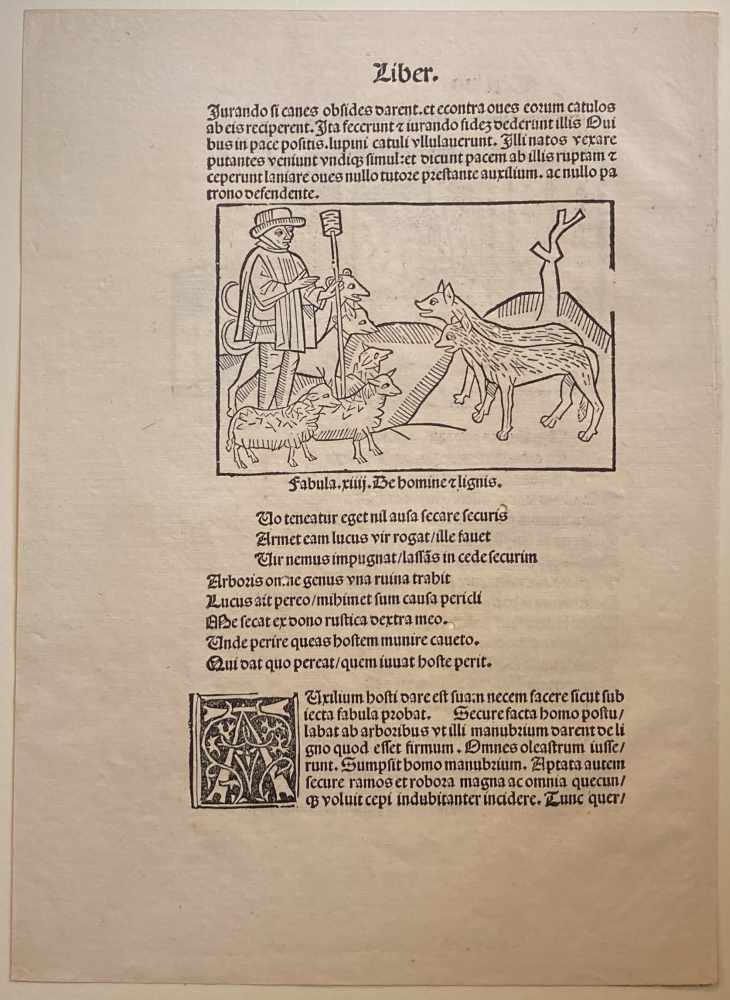

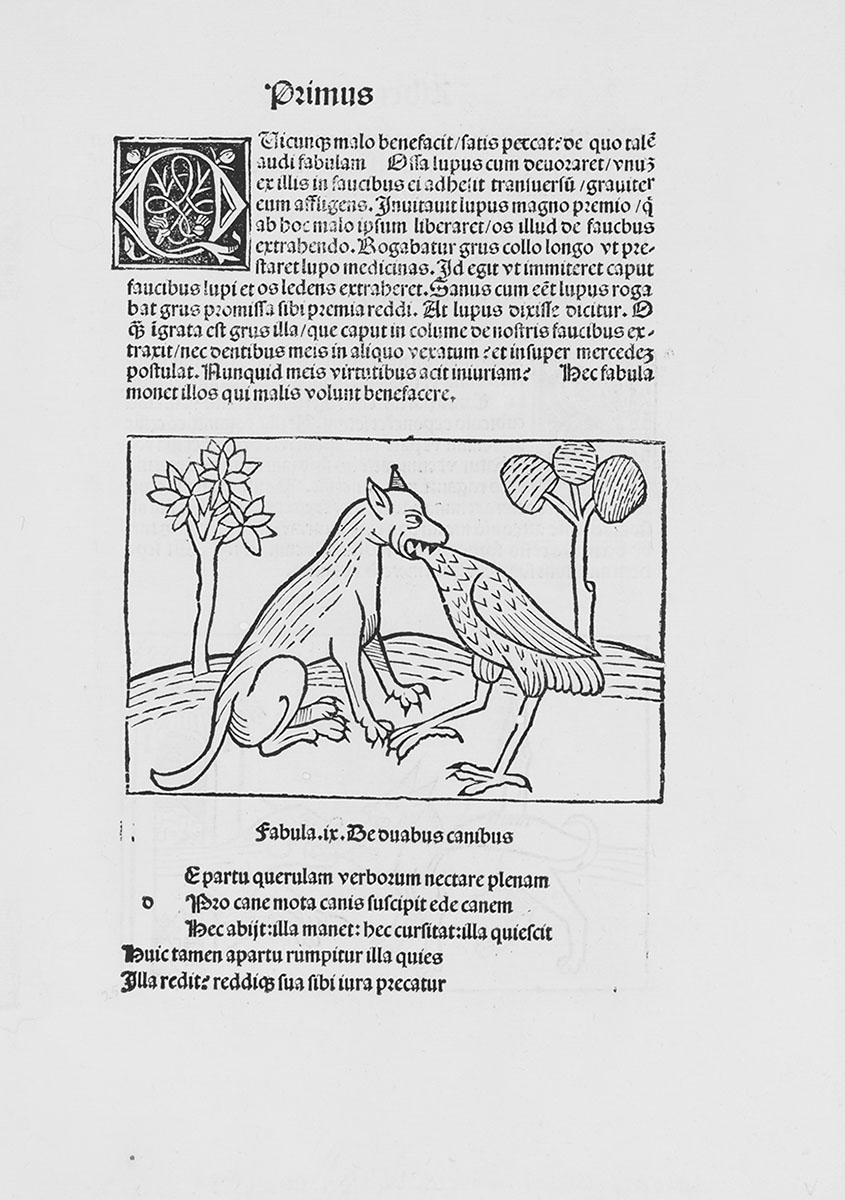

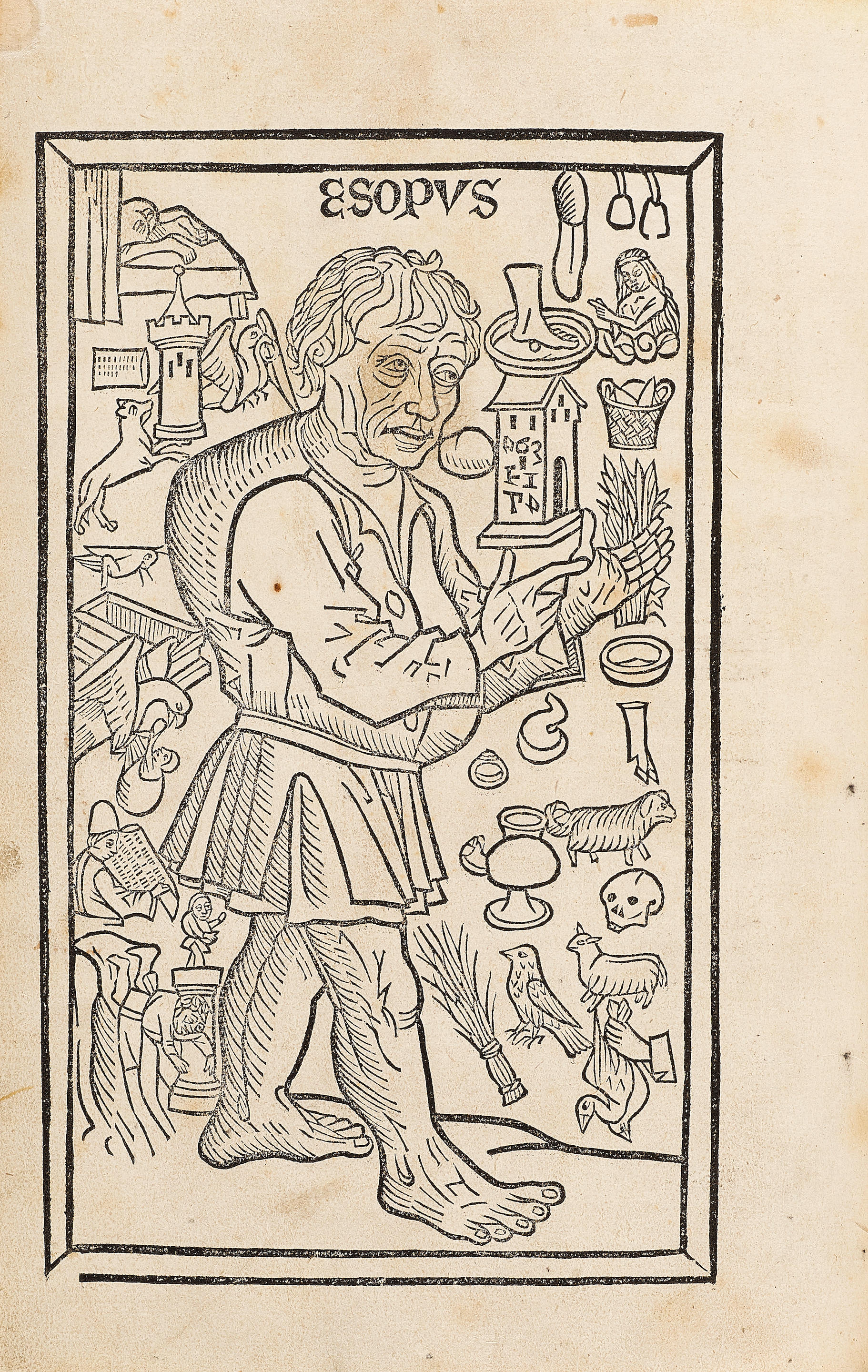
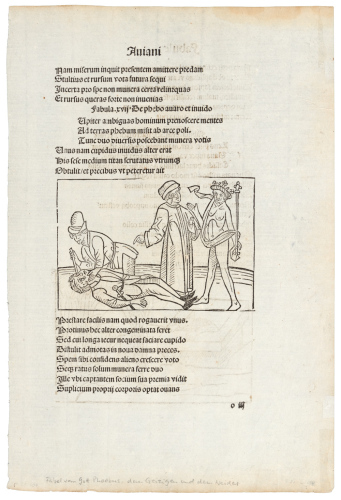
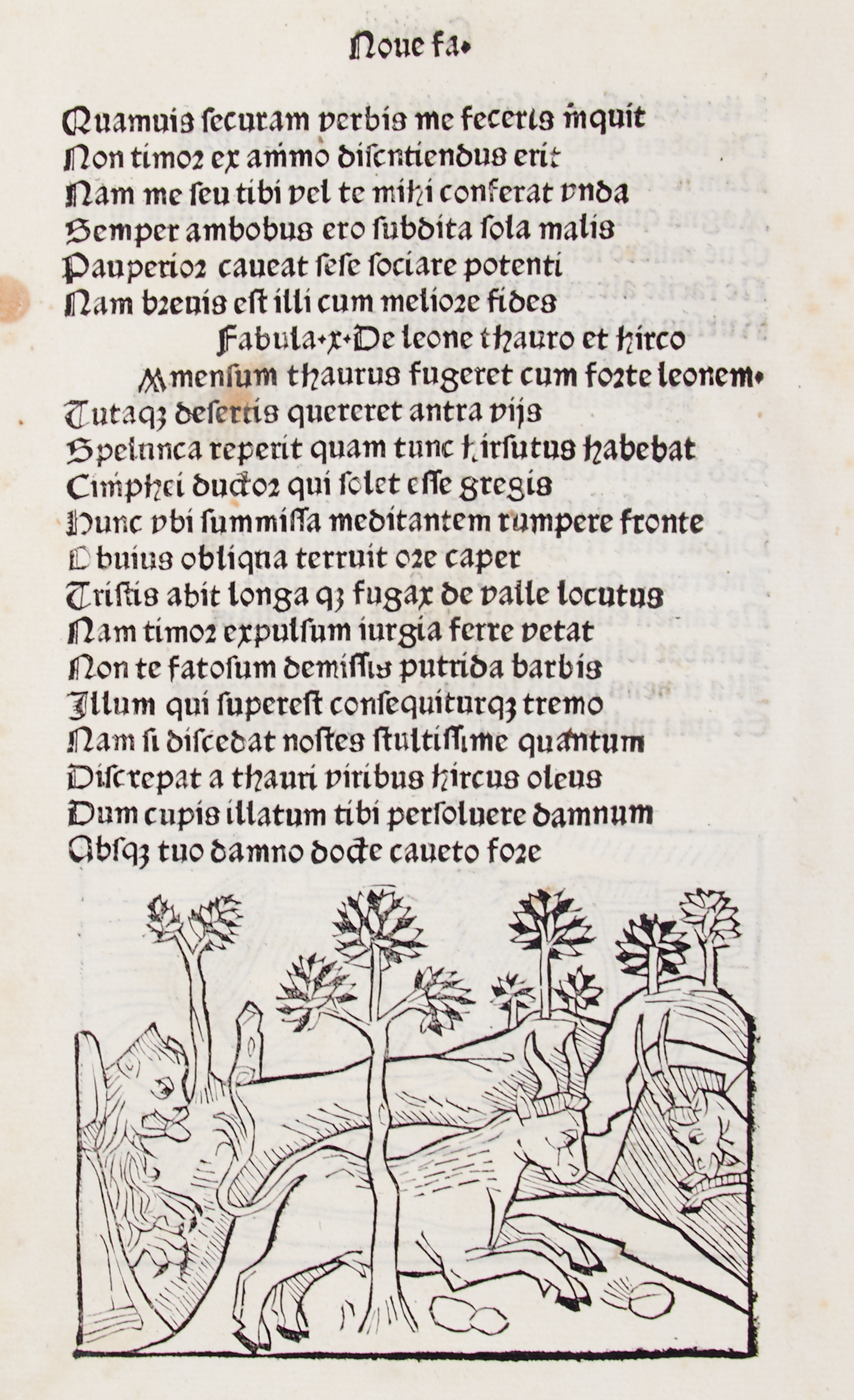
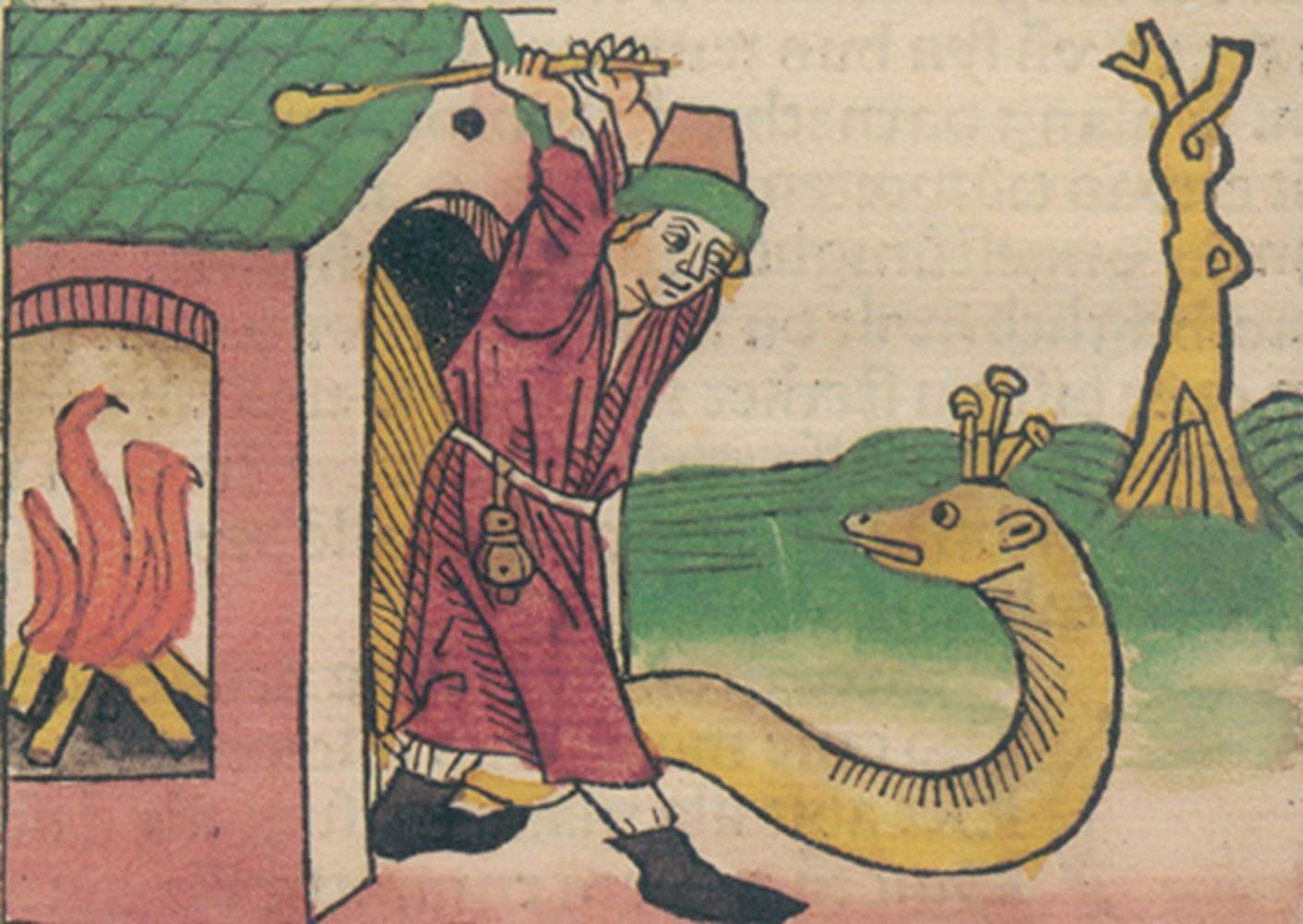


Testen Sie LotSearch und seine Premium-Features 7 Tage - ohne Kosten!
Lassen Sie sich automatisch über neue Objekte in kommenden Auktionen benachrichtigen.
Suchauftrag anlegen